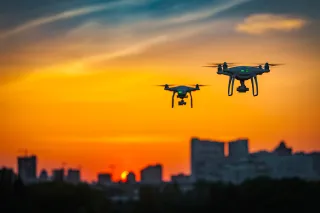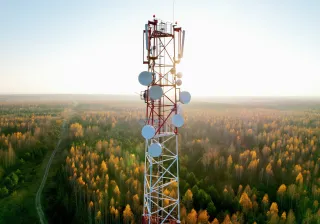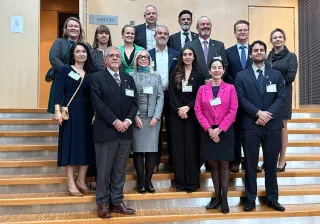From our customers’ perspective, VTT’s new strategy offers a framework to achieve sustainable growth faster – by utilising the most innovative science and technology of our time. Seize the opportunity and be a part of the transition toward exponential hope.
In 2020, as the second wave of COVID-19 was nearing, we published a pamphlet called The areas of exponential hope. The pamphlet listed technological areas that can help solve the world’s greatest challenges, and thus offer potential for growth and renewal. Perhaps most importantly, these areas of technological innovation are also feasibly within our reach. They offer radical yet realistic leaps in innovation, productivity and sustainability for companies, industries and society.
As 2021 continues to unfold, this message is more important than ever. This decade will be a pivotal time of change. To survive a period of increasing turbulence and uncertainty, companies, public organisations and societies need to make a radical shift towards sustainable growth. Our message is that new science and technology offer us incredible new tools to achieve this transition. We invite our customers to join us on this path of exponential hope.
Our purpose is to bring together people, business, science and technology to solve the world’s biggest challenges, creating sustainable growth, jobs and wellbeing.
With our new strategy, we bring clarity into HOW we help our customers create growth from sustainability. The strategy sharpens our activities to be 100% impact-driven. That means that we will be better at focusing our energy into research and innovation that is relevant to our customers in either the short term or the longer term by conducting trailblazing research in new areas. And we will be better and faster in creating concrete results from that research.
Five strategic choices we make to drive customer value
1st choice: “Always aim for impact”
We at VTT commit ourselves to focus all our energy and expertise on those systemic and technological challenges where we can make the biggest possible impact. To our customers this means that when something is on VTT’s agenda, it is headed towards impact. The question to ask is who will extract value from it.
While we still seek to solve the big global challenges – from the climate crisis and resource depletion to industrial renewal, safety and security and a good life for all – we now have more clarity on which technological and systemic challenges we will address to achieve this broader goal. We have reviewed our research and placed it within a new challenge frame, where our sharper focus areas flow together to solve 7 key challenges that will have implications across all our lives – and thus offer our customers relevant paths to sustainable growth.
These are:
- To reach a carbon neutral economy in the coming decades. Mobility, buildings, industry, energy – all must go carbon neutral quickly; this is self-evident. But our means to turn this transformation into profitable growth are greater than ever. It’s no longer just about ridding yourself of fossil dependency and cutting down emissions, but also about creating a new economy from low-carbon and carbon negative technologies and carbon reuse, bringing new growth streams to organisations across all industries.
- To achieve a tenfold productivity leap from resources. With new technologies we can turn sidestreams into valuable resources, circulate materials almost infinitely, reinvent manufacturing and create new, high-impact renewable materials. So the same resources can yield ten times more value – a promise that any organisation should want to cash in on.
- To secure society’s functions, fiscal sustainability and wellbeing while demographics shift. In the coming decades, we need to figure out how to organise societies so that they can offer health, well-being and economic safety even as demographics shift. There are huge opportunities here, too. New technologies can help societies predict and manage risks in turbulent times, and enable people to advance their personal health and well-being, offering new avenues for growth.
- To bring about the quantum leap in computing. This is a technological paradigm shift that could exceed the effects of the digital revolution. Quantum technologies and algorithms could help us speed up drug development, materials development or provide new paths to combat the climate crisis. Companies at the forefront of this emerging revolution could reap huge benefits.
- To create superior-performing materials and shorten the design cycle by 50%. Imagine a world where we can design fit-for-purpose materials and test their durability, sustainability, performance and even economic feasibility in advance. This is what fully virtual material design is about to bring to the table – and it spells a revolution in how industrial design and manufacturing will work in the future.
- To unleash superior performance and sustainability in digital systems. Digital systems now underpin all organisations. With advances in integrated electronics, photonics, next-generation microelectronics and space-based communication technologies, we can make these systems perform at a radically superior level – and use them as drivers for sustainability. This is the future of where the communications and electronics industries are headed.
- To match nature’s engineering skills through synthetic biology and bioinspired production. In the past decades, we have gained the ability to design DNA and start creating new biological organisms. This ability can be used, for instance, to revolutionise food production or create new biobased materials that outperform fossil-based options.
Taking charge of any of these challenges will provide organisations with new opportunities for growth and sustainability. And VTT can help customers assess where you should focus your energies to have the most impact. That brings us to our other four choices.
2nd choice: Always create impact with a customer
– this means that we will further stretch our capabilities from early-stage innovation towards commercial implementation. We will also become better at anticipating, evaluating and planning commercial impact during the earliest stages of a research project. This is to ensure that the work will eventually benefit the customer and result in growth opportunities. In addition, we will focus on research questions where we see opportunity for impact for our customers in the research that we conduct jointly in EU-funded projects and independently.
3rd choice: Always lead for excellence
We will restructure our research units, methods of leading and measuring in a tailored way to match specific research categories and customer needs. This means our teams will be able to serve our customers in a more efficient and agile way, making sure that as much value as possible is extracted from our work.
4th choice: Always drive sustainable business
Through more than a thousand projects annually conducted with our customers, our work creates a significant sustainability handprint in society and the economy, but we also practice what we preach by taking care of our own footprint. We aim for carbon neutrality in our own operations by 2030 and incorporate all-around corporate sustainability into everything we do.
5th choice: Always build the world’s most meaningful place to work
Our journey of exponential hope builds on an excellent platform. VTT employs more than 2,000 top professionals with science, innovation, and commercial knowhow, and has internationally leading infrastructure and research facilities across a range of scientific and technological fields. This platform gives us the ability to do truly ambitious and meaningful work: to bring exponential hope to a world that needs to deal with the climate crisis, achieve resource sufficiency, drive industrial renewal, provide safety and security, and enable a good life for all.
So how do we get started?
The first step to creating amazing things is getting started. We invite all our current and potential customers, be they businesses, public organisations, states or research partners, to contact us, then let’s assess where we can create the most impact together. The answer may even surprise us – as the paths to new growth tend to go beyond the obvious.





